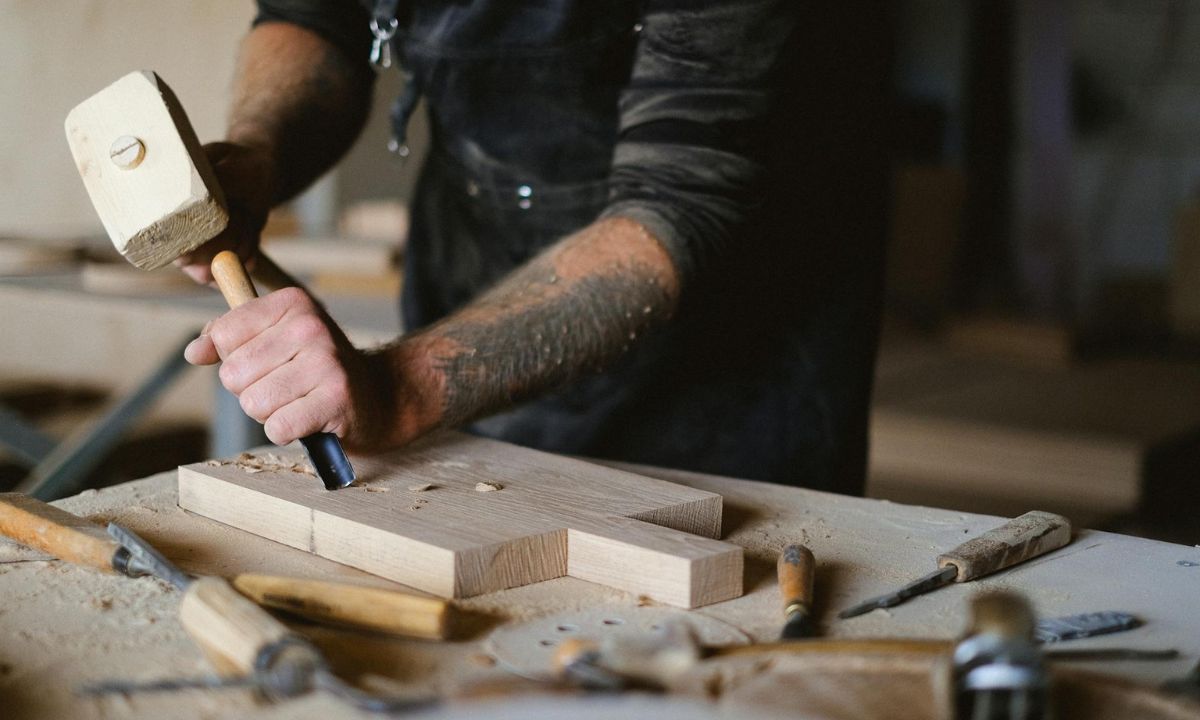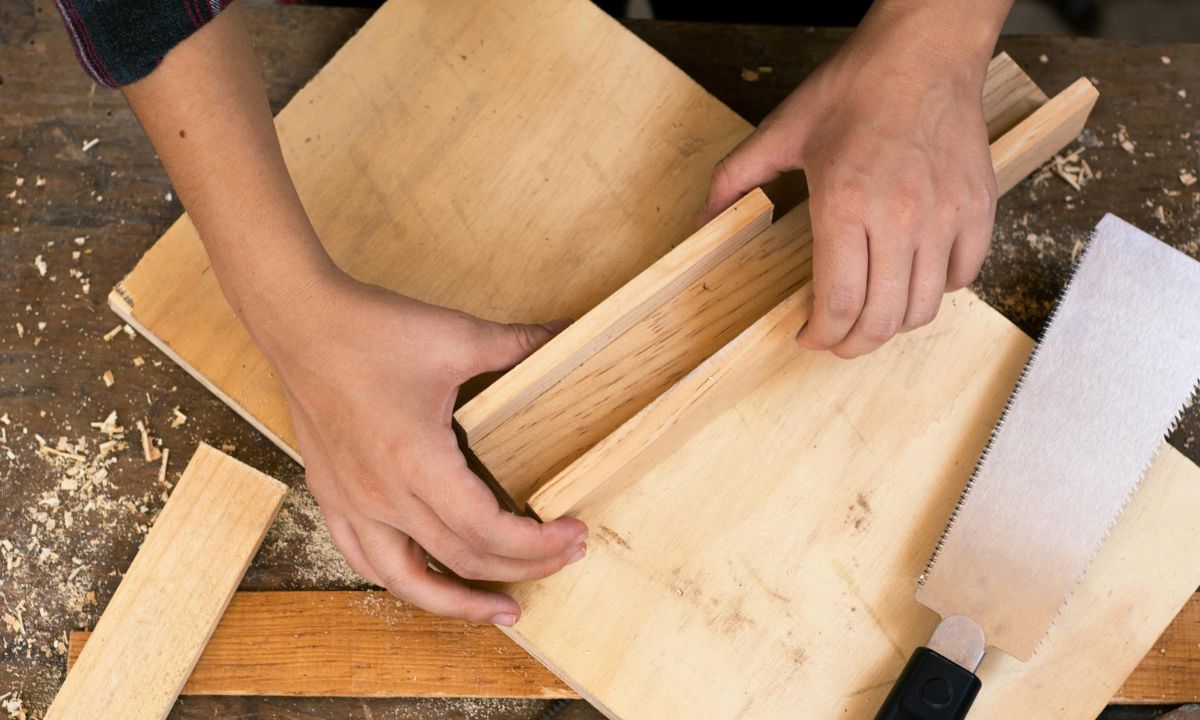What Are Some Wood Cutting Techniques? Cutting Techniques, Tools, and Best Practices
Woodworking is an art where much creativity, precision, and skill are needed. Besides the other important things in woodworking, mastering various wood-cutting techniques is really essential. How one knows these methods is going to have a great influence on productivity and quality both for beginners and professionals. Thus, here goes a guide that might describe the technique, equipment which one may need, and some tips for wood cutting to obtain the best results.
Take Your Woodworking to the Next Level! Build 16,000 Woodworking Projects With Step-By-Step Plans
Essential Wood Cutting Tools
Before talking techniques, let’s take a look at some of the tools that make the cuts. Following are some of the most usable wood cutting tools:
- Circular Saw: Pretty much the jack-of-all-trades when it comes to dealing with softwoods to hardwoods, this tool is ideal to make straight cuts and is one of the primary staples in a woodshop.
- Table Saw: The table saw is indeed very accurate, suitable for making rip cuts, due to its rigid construction combined with the power of the motor. It is usually one of the most used tools among woodworkers.
- Miter Saw: The miter saw is made for angled cuts, hence ideal in creating joints and corners with accuracy. It is good to go in projects that require precision angles.
- Jigsaw: It’s the most versatile of all wood-cutting tools, which can go through intricate, curved cuts, straight cuts, and even plunge cuts. This tool is considered indispensable for detailed work in woodworking projects.
- Hand Saw: Although the modern world of woodworking has been conquered by power tools, the hand saw still has its place for control and delicacy. It is ideal for small projects or where precision is necessary.
For those looking to upgrade their toolkit, consider exploring the best tools for your needs.
Common Methods of Wood Cutting Techniques

Crosscut
A crosscut is a cut across the grain of the wood, essentially perpendicular. It is one of the very basic operations that frequently comprise the first step of raw woodstock processing into a useful form. Crosscuts are necessary for pieces to arrive at needed lengths, thereby making them ready for further processing. Saws such as circular saws and table saws can execute crosscuts effectively.
Pro Tip: The blade should always be razor sharp and aligned properly for clean, accurate crosscuts.
Rip Cut
Rip cuts are parallel to grain and are used to make wide boards into narrower sections. The table saw, with its rip fence systems, is the best tool to do this job. For straight rip cuts, proper alignment of the rip fence with a consistent feed rate.
Pro Tip: Always use a push stick when ripping for safety and control in the cuts.
Miter Cut
Miter cuts introduce angles into the equation of woodworking, and thus corners and joints that perfectly fit can be made by artisans. The miter saw, with its pivoting blade, will be ideally fitted to this technique. First, understanding the features of the saw, including bevel and miter adjustments, is important in getting accurate miter cuts.
Pro Tip: Double-check your angle measurements before making the cut to make sure it will be a perfect fit.
Bevel Cut
Bevel cuts are done by tilting the saw blade, which allows making angled edges across the thickness of the wood. This further adds dynamism to woodworking, where beveled edges and unique shapes can be given to wood pieces. Bevel cuts can be made by circular saws, table saws, and miter saws.
Pro Tip: Practice your bevel angles on scrap wood to nail the perfect one for your final piece.
Dado Cut
A dado cut is done to create a wide, flat bottomed groove or trench across the wood. Commonly done for joinery-to form a shelf channel, to place panels inside cabinet construction-the right dado cuts have to be precariously marked and the setup of the cutting tool done just so.
Pro Tip: If he has a table saw and a dado blade set, cuts will be much cleaner, and the whole thing is going to go a lot faster.
Build 16,000 Woodworking Projects With Step-By-Step Plans
Advanced Cutting Techniques
Rabbet Cut
Rabbet cuts are just like dado cuts, except they run along the edge of the wood instead of through its face. It is a cut whereby a part of the wood is removed to create either a step or recess for the reception of another member. Rabbet joints are among the most used in projects that require perfect and seamless connections, such as making boxes or drawers.
How-to Tip: Rabbet cuts can be just perfect and neat using a router with a rabbeting bit.
Dovetail Cut
Dovetail joints pride themselves on strength and aesthetic value. This involves a joinery cut with interlocked wedge-shaped tails and pins that make it highly robust under pulling forces. Dovetail joints, in truth, are found everywhere-from common to high-end applications, from lower cabinets or drawers to an expensive piece of furniture.
Pro Tip: Perfect the complex geometry of dovetail joints on scrap wood before getting started.
Mortise and Tenon Cut
The mortise and tenon joints are essentially simple and strong. A hole, normally called a mortise, is made in one piece of wood to accommodate another piece of wood, called a tenon, which projects from a second piece. It finds its application in general furniture making and structural woodworking.
Pro Tip: To achieve accuracy in both the mortise and tenon cuts, mortising machines or chisels may be used.
How to Choose the Right Joint for Your Project

The type of wood-cutting method is mainly predetermined by the type of wood, the size of the project, and the results one wants to achieve. A quick guide to help you decide follows below.
- Hardwoods vs. Softwoods: Hardwoods, such as oak and maple, require special blades and ways of cutting, while softwoods, like pine, are way more forgiving.
- Project Size: Larger projects may require both basic and advanced techniques, while smaller projects may involve more precision cuts.
- Desired Outcomes: Exposed joinery can require dovetail or mortise and tenon cuts. Clean edges can require crosscuts, or rip cuts.
For more on choosing the right tool for the job, see this resource.
Safety Tips for Cutting Wood
Woodworking can be dangerous if a person does not take the right safety precautions. Here are some basic tips for shop safety:
- Wear Your Protection: Safety glasses, ear protection, and dust masks protect the worker from flying debris and loud noises.
- Maintain Tools: Dull blades increase the possibility of accidents and will give lousy cuts. Often sharpen tools to maintain their performance.
- Follow Instructions: Instructions or a manual usually come with every tool. This will provide directions for safe operation.
Build 16,000 Woodworking Projects With Step-By-Step Plans
The Future of Wood Cutting
Advances in technology are taking the woodworking industry to new dimensions. Examples include the ever-growing use of CNC, Computer Numerical Control machines, that make work so accurate and quick. These machines perform with computer-controlled routers and saws that result in incredibly complex designs with very little waste.
Besides, AI-driven CNC machines are under development for optimized cutting to reduce the production time. With all these innovations, the work with wood has become more feasible and productive both for the hobbyist and professional alike.
It is also a resourceful guide to those that would like to know more about new woodworking tools and methods.
Conclusion
Woodworking is the art of mastering your techniques that will result in a quality, accurate, and beautiful project. Each technique applies to its application and certain difficulties, ranging from the easiest crosscuts to the most complex joinery cuts. Knowing this tool, technique, and safety will enhance your woodworking skills and give you superior results.
Be it a novice or some skillful expert in woodworking, mastery of those definitely requires lots of practice and learning. For any extra information or anything that can be of help to you, take a look at this long guide.
Can You Make Money Selling Woodworking Projects?
What Woodworking Project is Most Profitable?
How to Make Money Fast with Woodworking?
What is the Highest Paid Woodworker?
Is Woodworking a Good Business to Start
What is the Best Platform to Sell Woodworking Projects?
How to Sell Wooden Items Online?
Woodworking Related Topics And Tags: Wood Cutting Techniques, Woodworking Tools, Wood Cutting Tips, Crosscut and Rip Cut, Advanced Wood Joinery, Woodworking Safety, Circular Saw Guide, Table Saw Techniques, Miter Saw Tips, Dovetail Joints, Mortise and Tenon Cuts, Woodworking for Beginners, Wood Cutting Tools, Woodworking Projects, CNC Wood Cutting, Woodworking Precision, Woodworking Safety Tips, Woodworking Guide, DIY Wood Cutting, Woodworking Best Practices
